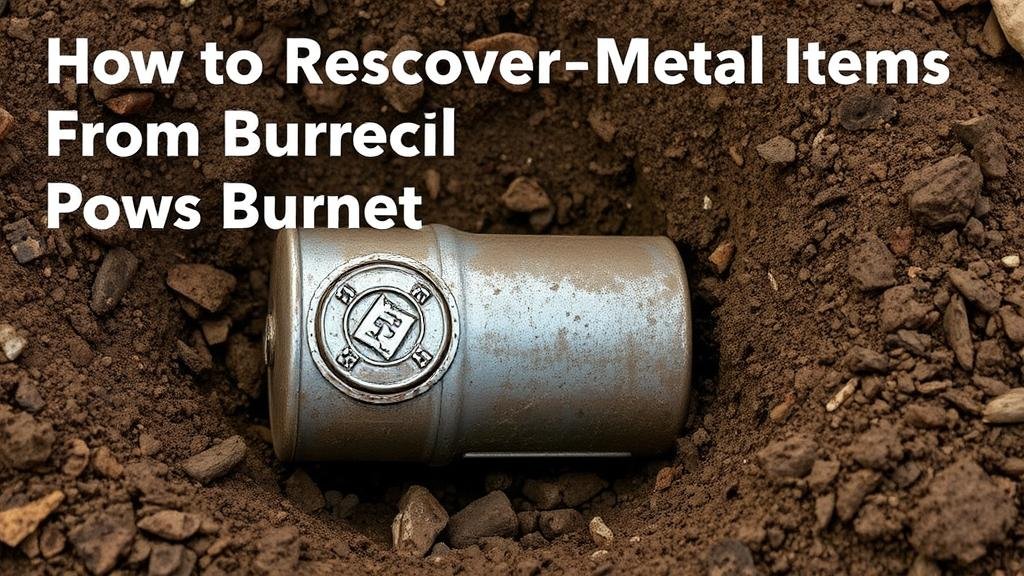How to Recover Metal Items From Buried Trash Pits Without Damage
How to Recover Metal Items From Buried Trash Pits Without Damage
Recovering metal items from buried trash pits is a task that combines archaeological techniques with specialized tools and methods. This process necessitates meticulous handling to avoid damaging valuable artifacts or environmental disturbance. This article will explore the strategies, tools, and methods for effectively excavating these items while ensuring their preservation and giving examples of successful recoveries.
Understanding the Importance of Preservation
Preserving metal items, especially artifacts of historical significance, is crucial for both academic research and cultural heritage. Metal corrosion is accelerated by exposure to moisture and air, often rendering recovered items unrecognizable. Understanding the pitfalls of improper excavation and restoration is essential. According to the National Park Service, the average corrosion rate of metals in archaeological contexts can be reduced by 75% with proper conservation techniques.
Preparatory Steps Before Excavation
Before beginning an excavation, thorough planning is necessary. This includes research on the sites history, which can provide insight into the types of metal objects expected. Here are preparatory steps to consider:
- Site Survey: Conduct a geophysical survey to identify potential buried materials without disturbing the site. Ground-penetrating radar (GPR) or magnetometry can reveal the presence of metals.
- Permitting: Ensure that you have the necessary permits and permissions from local authorities to conduct the excavation, especially in protected areas.
- Documentation: Create a detailed plan that includes stratigraphy, excavation methods, and a logging system to record the position of each recovered item.
Excavation Techniques
Careful excavation techniques are vital to prevent damage to the metal artifacts and the surrounding environment. Here are recommended methods:
- Hand Excavation: Use small hand tools (trowels, brushes) for excavating around metal objects. Larger tools can disturb the surrounding soil, potentially damaging delicate items.
- Wet Excavation: For items buried in wetter conditions, consider wet excavation techniques that involve pumping out water and carefully removing soil in layers to expose artifacts gently.
- Layer by Layer Removal: Excavate in stratigraphic layers to preserve the context of the artifacts. Document each layer’s depth and characteristics.
Identifying and Recovering Metal Items
Once excavation begins, the identification of metal items is crucial. Common metals recovered include iron, copper, brass, and silver. Each metal requires different handling:
- Iron: Prone to rust, iron artifacts should ideally be removed with surrounding soil still attached to minimize surface damage.
- Copper and Brass: Known for their patinas, these metals are best handled using gloves to prevent oils from hands damaging their surfaces.
- Silver: Often also corroded, silver items should be gently cleaned using a soft brush before placing in protective bags once recovered.
Post-Recovery Conservation
After retrieval, the next essential step is conservation. Immediate action helps prevent deterioration:
- Cleaning: Use distilled water for cleaning, avoiding harsh chemicals. For severe corrosion, professional conservation treatment may be required.
- Stabilization: Metal artifacts should be stabilized with materials such as polyethylene glycol (PEG) to prevent further corrosion.
- Storage: Store artifacts in climate-controlled environments in acid-free materials to inhibit deterioration.
Case Studies: Successful Recoveries
Several case studies exemplify effective recovery and conservation of metal artifacts:
- The Oseberg Ship Burial: Excavation revealed a Viking ship with numerous metal artifacts. Archaeologists used careful wet excavation, leading to successful recovery and subsequent conservation.
- 1920s New York City Trash Pit: Recoveries from this site included numerous metal consumer products, revealing historical consumer habits. A meticulous stratigraphic approach ensured minimal damage to the items.
Conclusion: Best Practices for Successful Excavation
Recovering metal items from buried trash pits requires detailed planning, patience, and proper techniques. By adhering to the outlined practices–from initial research to final conservation–archaeologists and hobbyists alike can successfully recover and preserve valuable artifacts that offer crucial insights into our past. As this field continues to evolve with advancements in technology, such as digital excavation methods and improved conservation practices, the opportunities for discovering and preserving metal heritage will only grow.
Actionable Takeaway: Whether you are an amateur archaeologist or a seasoned professional, prioritize thorough preparation, meticulous excavation techniques, and proper post-recovery conservation to ensure the longevity and integrity of your metal finds.


